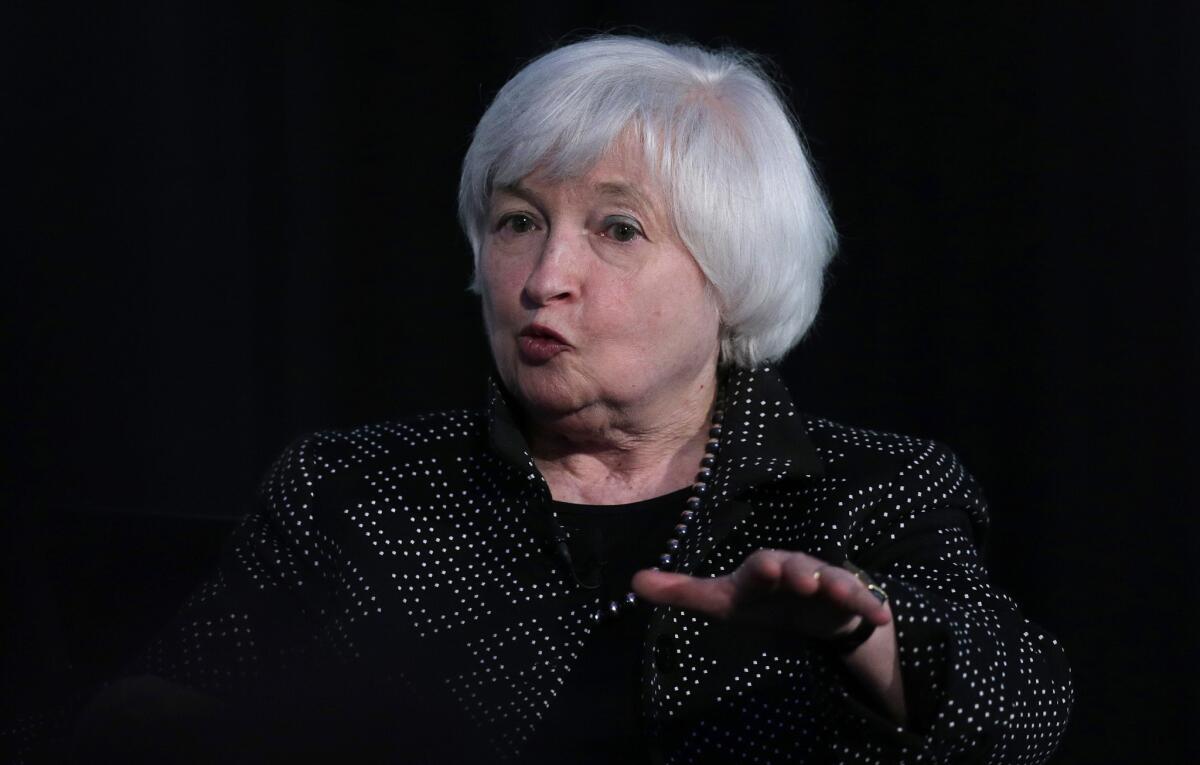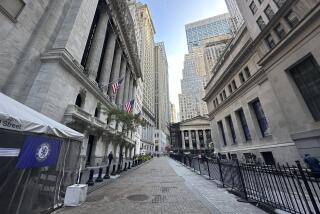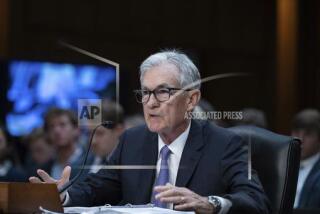Yellen downplays dissent as Fed holds key interest rate steady

Federal Reserve Chairwoman Janet L. Yellen speaks during an event at Harvard University
Reporting from Washington â Federal Reserve policymakers held off on an interest rate increase Wednesday with a rare level of dissent amid some lackluster economic data but signaled a rate hike is coming before the end of the year.
Fed Chairwoman Janet L. Yellen also said regulators will be looking at Wells Fargo & Co.âs bogus-accounts scandal to make sure large banks have safeguards to prevent such abuses, even though the agency doesnât have a direct role in retail-bank regulation.
Yellen said Fed officials have been âdistressedâ to see how some banks respond to problems, such as the improper sales tactics at Wells Fargo that led employees to open as many as 2 million accounts that customers didnât authorize.
âWhat weâd really want to see is robust procedures that ensure that employees are always acting in a legal and ethical manner, and that the incentives that are put in place in these organizations are appropriate and donât serve to foster behaviors that could harm the public,â Yellen said of the Fed, which regulates the holding companies of Wells Fargo and other large banks.
The 7-3 vote to keep the benchmark federal funds rate steady at between 0.25% and 0.5% showed growing divisions within the Federal Open Market Committee about whether the economy is strong enough to handle a small increase.
The three dissenters, who wanted to inch the rate up by a quarter percentage, were the most for a Fed monetary policy decision since December 2014.
And the tally signaled that Yellen, who voted with the majority, could have trouble holding back a rate hike for much longer.
But the official statement after the Fedâs two-day rate-setting meeting indicated a small boost is coming later this year.
âThe committee judges that the case for an increase in the federal funds rate has strengthened but decided, for the time being, to wait for further evidence of continued progress toward its objectives,â the statement said.
Speaking to reporters after the meeting, Yellen sought to downplay the divisions. She said most policymakers were more concerned about triggering a recession by increasing the rate too soon rather than causing inflation by keeping it low for a while longer.
âOur decision does not reflect a lack of confidence in the economy,â she said. âWeâre generally pleased with how the U.S. economy is doing.â
There was upbeat language in the Fedâs official statement about the labor market continuing to âstrengthen and growâ and an improved pace of economic growth.
And the policymakers said the ânear-term risks to the economic outlook appear roughly balanced.â Fed officials used similar language last fall before raising the rate in December.
A majority of the officials on Wednesday cut in half the number of small, quarter-point rate increases they expect for the rest of the year â to just one.
Yellen said she would expect to see a rate hike this year âif we continue on the current course of labor market improvement and there are no major new risks that develop, and we simply stay on the current course.â
Analysts have said a rate increase is unlikely at the Fedâs next meeting in November, just days before the presidential election, so that would indicate one is coming in December.
âI think December is the most likely timingâ for a rate hike, said Scott Anderson, chief economist at Bank of the West in San Francisco. The Fedâs official statement âwas a pretty big hint theyâre going to moveâ by the end of the year, he said.
But three presidents of regional Fed banks who hold rotating voting seats on the committee this year didnât want to wait.
Esther L. George of Kansas City, Loretta J. Mester of Cleveland and Eric Rosengren of Boston all âpreferredâ to raise the rate at this weekâs meeting, the Fed statement said.
George dissented on votes to hold the rate steady in March, April and July. But Rosengren and Mester had sided with Yellen until this month.
More than one or two dissents is rare for the rate-setting committee, which tries to show a unified front to avoid sending mixed signals to financial markets.
Yellen said committee members âstruggled mightilyâ to understand each otherâs views at the meeting. But she did not appear concerned by the unusual number of dissents.
âI think itâs a very good thing that the FOMC is not a body that suffers from group-think,â she said.
Analysts and investors had not expected a rate increase Wednesday. Part of the reason is that Fed policymakers do not like to raise interest rates close to a presidential election because they donât want to appear to be trying to help either major partyâs candidate. Since 1984, the Fed has raised its key interest rate only once â in 2004 â within two months of election day.
Yellen said politics had nothing to do with Wednesdayâs decision and indicated the Fed could raise the rate in November.
âWe do not discuss politics at our meetings, and we do not take politics into account in our decisions,â she said.
Yellen also declined to comment on recent statements by Republican presidential nominee Donald Trump that she was holding the rate low to help President Obama and Democrats.
The Fed raised the rate a quarter percentage point in December after holding it near zero for seven years in an unprecedented attempt to stimulate the economy during and after the Great Recession.
Fed officials on Wednesday downgraded their forecast for economic growth in 2016 to just 1.8% from a June forecast of 2%. And a majority of policymakers reduced their anticipated number of rate increases for the rest of this year to just one.
In June, a majority expected two rate hikes through the end of the year.
Policymakers also signaled the rate would rise more slowly over the next few years than they had forecast in June. Anderson called the pace âglacial rather than gradual.â
The median projection is for the rate to increase to just 1.1% by the end of next year and 1.9% by the end of 2018. In June, the median forecast put the rate at 1.6% by the end of next year and 2.4% at the end of 2018.
Follow @JimPuzzanghera on Twitter
ALSO
Government paves way for driverless cars to hit the roads
Cyberattacks against companies donât hurt them much financially, Rand study finds
If Donald Trump loses the election, launching a TV network wonât be an easy plan B
UPDATES:
1:35 p.m.: This article was updated with comments from Federal Reserve Chairwoman Janet L. Yellen and analysis from Scott Anderson, chief economist at Bank of the West.
This story originally was published at 11:15 a.m.
More to Read
Inside the business of entertainment
The Wide Shot brings you news, analysis and insights on everything from streaming wars to production â and what it all means for the future.
You may occasionally receive promotional content from the Los Angeles Times.











